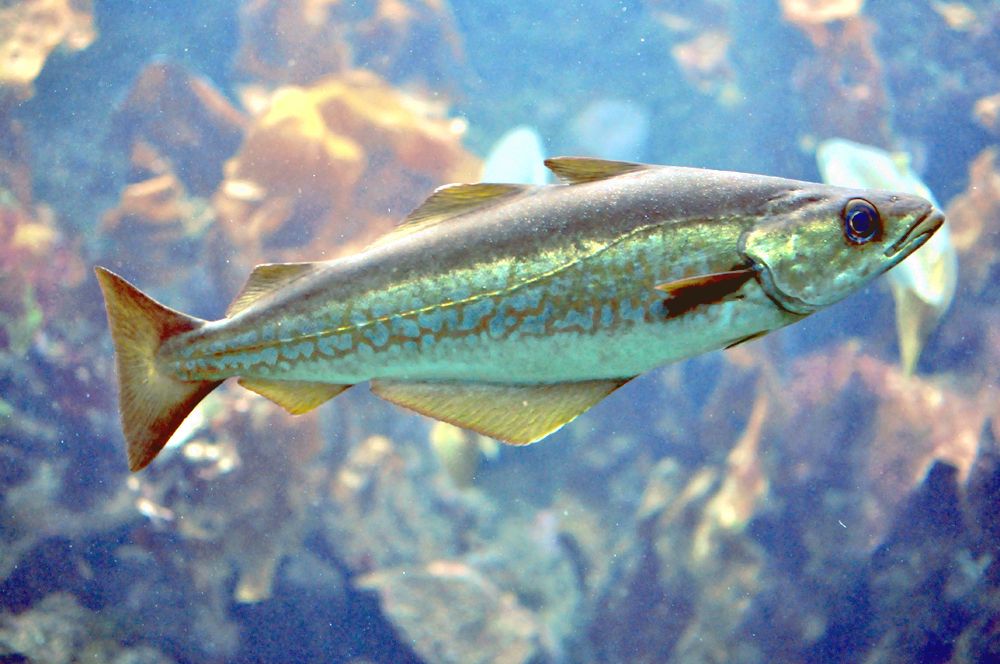
Read the article with FishingTheSpot: the pollack fish
Keep an eye on this subject!
Thousands of species spotlights and techniques but also all the local information about your city!



Meet other anglers near you and share your fishing fishing trips, afoot or on a boat, at sea or in freshwater
See the fishing tripsThe Pollack fish

All year
30 cm
Did you fish
this species this month?
The Pollack fish belongs to the Gadidae family. Its size can reach 1.40 m for an average of 60 to 80 cm. The Pollack grows very quickly and lives between 8 and 10 years, while most pelagic fish have a lifespan of more than 20 years. Reproduction takes place in February March. Fertility can reach 4 million eggs. It can be fished all year round.
Elongated body, covered with small scales, orange-yellow color, darker on the back, marbled in young individuals, bright yellowish white in adults. Prominent lower jaw, big eye. The dark-colored lateral line is curved at the pectoral fins, which makes it easily distinguishable from the black locus (Pollachius virens) in which it is straight. The Pollack, like many Gadidae, has three clearly triangular dorsal fins and two anal fins. It is one of the few Gadidae that does not have chin barbells. Juveniles are rather reddish brown with longitudinal stripes of blue-grey.
The Pollack fish lifestyle
A voracious hunter, the Pollack is a major consumer of fish: sand-eels, tackles, capelin, sprats, anchovies and sardines make up the bulk of its diet. However, it does not despise crustaceans: shrimps, crabs and other cephalopods: squid, cuttlefish, octopus. They generally hunt in small groups, sometimes alone, especially when they are old. During the growing season in shallow waters, the young also feed on small crustaceans and their larvae.
Egg laying occurs between February and March, when temperatures rise (9/10° C), during large gatherings in the depths of 100 to 150 m. The female can lay up to 4 million eggs. Eggs are small (~ 1 mm) and 3 to 4 mm pelagic larvae migrate to coastal waters after two to three months of pelagic life to complete relatively rapid growth. When they are 3 years old, a Pollack can already measure 30 to 40 cm, also the age at which it usually reaches sexual maturity. It reaches the sea around the age of five, measuring between 50 and 65 cm depending on the area. After breeding, the largest spawners return to the deep sea, escaping capture by fishermen.
The Pollack fish habitat
It lives between two waters, or near the bottom up to 150 m but it is most frequently found on rocky bottoms, covered with algae but also in wrecks where it can be abundant.
It is found in the Mediterranean, Atlantic, English Channel and North Sea, From northern Norway to the Bay of Biscay, Iceland and the eastern Baltic Sea.
The Pollack fish angling
When trolling, the most exciting lure, one of the very first soft lures, turns out to be the rubber eel. A place can refuse for hours a train of feathers, also called a machine gun, waddled, but it cannot resist an eel passing horizontally.
There are therefore three main ways to fish for Pollack:
- Heavy trolling,
- Drifting,
- At a fixed location.


